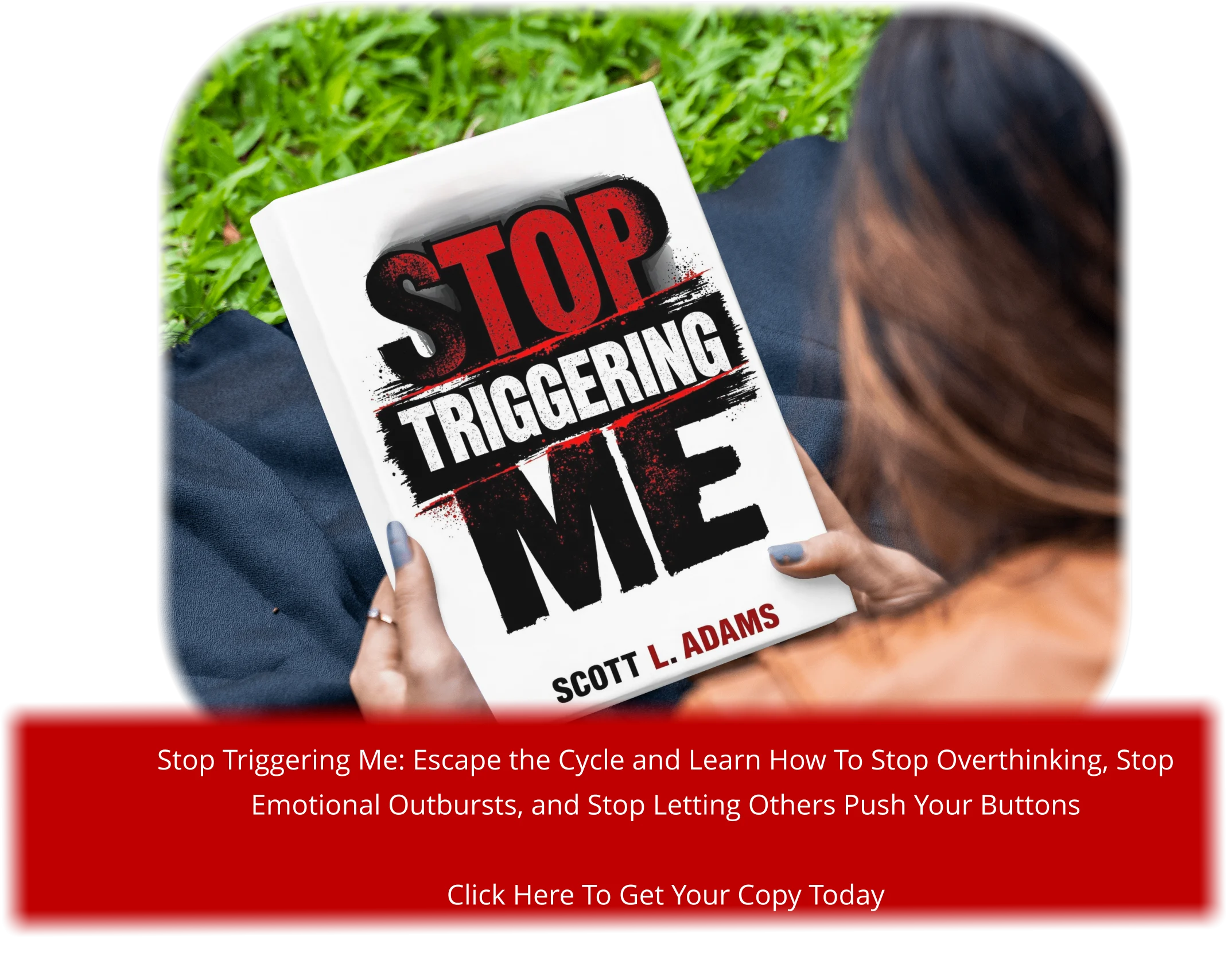I remember sitting on my couch one evening, staring at the ceiling. My to-do list was a mile long, and my mind was racing. Bills, work deadlines, and family responsibilities all seemed to pile up at once. I kept telling myself, “Just relax,” but my brain wouldn’t listen. It felt like I was stuck in a loop of worry and tension.
Sound familiar? You’re not alone. Studies show that approximately 70% of adults report feeling stressed about work on a regular basis1. And it’s not just work—life’s daily challenges can make it feel impossible to unwind. But here’s the thing: your brain isn’t designed to stay in high alert forever. Understanding how it works can help you take back control.
I’ve learned that small changes can make a big difference. Whether it’s taking a few deep breaths, carving out time for yourself, or simply acknowledging your feelings, these steps can help you break the cycle. It’s not about eliminating stress entirely—it’s about finding a way to manage it so you can live a healthier, happier life.
Key Takeaways
- Chronic stress affects many adults, with 70% reporting work-related stress regularly1.
- Your brain’s fight-or-flight response can keep you from relaxing, but understanding it is the first step to change.
- Small, consistent actions can help you regain control over your mental health.
- Daily challenges like work, bills, and family responsibilities often make relaxation seem impossible.
- Taking time for yourself, even in small ways, can lead to significant improvements over time.
Understanding Stress: The Hidden Impacts on Mind and Body
It was a Tuesday morning, and I couldn’t shake the tightness in my chest. My shoulders felt like they were carrying the weight of the world. I didn’t realize it then, but my body was sending me signals—signals I had been ignoring for weeks. Stress doesn’t just live in your mind; it takes a toll on your entire being.
Physical Reactions and Symptoms
Your body reacts to stress in ways you might not expect. Muscle tension, headaches, and even stomach issues are common signs2. I remember waking up with a pounding headache, thinking it was just a bad night’s sleep. But it wasn’t. Chronic stress can lead to serious health problems over time, like heart disease3.
Sleep disturbances are another red flag. Nearly 50% of adults report trouble sleeping when under pressure2. I used to toss and turn, replaying the day’s worries in my head. It’s a cycle that’s hard to break.
Emotional and Cognitive Effects
Stress doesn’t just hurt your body—it messes with your mind too. Feeling overwhelmed, anxious, or even depressed are all emotional effects2. I’ve had days where I couldn’t focus, no matter how hard I tried. It’s like your brain is stuck in overdrive.
Chronic stress can also lead to forgetfulness and irritability. Studies show that 30% of stressed individuals experience mental fog3. Recognizing these signs early is crucial. It’s the first step toward taking control.
- Physical signs: Muscle tension, headaches, sleep problems.
- Emotional toll: Anxiety, depression, feeling overwhelmed.
- Long-term risks: Heart disease, immune system suppression.
- Daily impact: Difficulty focusing, irritability, forgetfulness.
Understanding these effects empowers you to seek help. Whether it’s talking to a friend or trying mindfulness practices, small steps can make a big difference. You don’t have to face it alone.
The Science Behind Your Brain’s Stress Response
One afternoon, I felt my heart racing for no apparent reason. My hands were clammy, and my thoughts were scattered. I didn’t understand why my body was reacting this way—until I learned about the fight-or-flight response. It’s your brain’s way of protecting you from perceived threats, but sometimes, it kicks in when you don’t need it4.
How Stress Triggers the Fight-or-Flight Reaction
When your brain senses danger, it sends a signal to your body to prepare for action. This is the fight-or-flight response. Your heart pumps faster, and your muscles tense up. You might feel a sudden rush of energy, like I did that afternoon. It’s your body’s way of getting ready to face a challenge5.
But here’s the thing: your brain can’t always tell the difference between real danger and everyday worries. That’s why you might feel jittery before a big meeting or while dealing with a tough day. Understanding this response helped me see that my stress wasn’t personal—it’s natural.
The Role of Hormones and Neurotransmitters
Hormones like adrenaline and cortisol play a big role in this process. Adaline gives you that burst of energy, while cortisol keeps your body on high alert. Neurotransmitters, like norepinephrine, help send these signals throughout your brain and body4.
When I learned about these chemicals, it was an “aha” moment. I realized my body wasn’t working against me—it was trying to help. But when this response happens too often, it can take a toll on your mental and physical health.
Here’s what helped me: taking a few deep breaths. It’s a simple technique, but it works. Deep breathing signals your brain to calm down, interrupting the stress response. Try it the next time you feel that rush of energy—it might just help you regain control.
Stress management: Proven Techniques to Regain Control
Last week, I found myself staring at my laptop, unable to focus on the task at hand. My mind was cluttered, and I felt like I was drowning in responsibilities. That’s when I realized I needed a way to take back control. What worked for me might not work for you, and that’s okay. The key is to personalize your approach.
Personalizing Your Approach to Coping
One of the most effective techniques I’ve used is setting boundaries. Saying “no” to nonessential tasks freed up my time and energy. Another game-changer was deep breathing. Taking a minute to pause and breathe deeply helped me reset during overwhelming moments6.
Journaling also made a big difference. Writing down my thoughts helped me process emotions and gain clarity. Studies show that mindfulness practices like this can reduce stress levels by up to 25%7. It’s not about finding a one-size-fits-all solution—it’s about discovering what works for you.
Here’s a quick tip: try a one-minute pause. Close your eyes, take a deep breath, and focus on the present. This simple practice can help you regain focus and calm your mind instantly.
Consistency is crucial. Small, daily actions can lead to significant change over time. Whether it’s setting boundaries, journaling, or practicing mindfulness, these strategies can improve your mental health and overall well-being8.
Identifying and Addressing Personal Stressors
It hit me during a quiet moment—I was overwhelmed, but I couldn’t pinpoint why. My mind was cluttered, and I felt like I was carrying a weight I couldn’t name. That’s when I realized: not all stress is the same. Some days, it’s a bad day; other times, it’s a deeper, lingering problem.
Chronic stress often creeps in subtly. You might notice small signs, like constant fatigue or irritability. I remember thinking, “It’s just a busy week,” but weeks turned into months. That’s when I knew it wasn’t just a one-off—it was chronic9.
Pinpointing Chronic vs. Acute Stress
Acute stress is like a storm—intense but short-lived. It’s the pressure before a big presentation or a family argument. Chronic stress, on the other hand, is like a constant drizzle. It’s the ongoing demands of work or unresolved family issues that wear you down over time10.
I’ve learned to ask myself: “Is this a bad day, or is it something deeper?” Reflecting on this helped me see patterns. For example, I noticed that certain people or situations consistently triggered my stress. Acknowledging this was the first step toward change.
Even small activities or minor issues can build up. Missing a deadline or skipping a workout might seem insignificant, but over time, they can add to the pressure. Recognizing these triggers is crucial for breaking the cycle11.
Here’s what helped me:
- Notice the signs: Fatigue, irritability, or trouble focusing can indicate chronic stress.
- Reflect on triggers: Identify who or what contributes to your stress.
- Take small steps: Addressing even minor issues can prevent them from becoming bigger problems.
Identifying your stressors isn’t about blaming yourself—it’s about taking control. It’s the first step toward creating a healthier, more balanced life.
Replacing Unhealthy Coping Mechanisms
It was late at night, and I found myself reaching for a bag of chips, even though I wasn’t hungry. I knew it wasn’t about the food—it was about numbing the chaos in my mind. Sound familiar? Many of us turn to quick fixes like food, alcohol, or even drugs to cope with life’s challenges. But these habits only offer temporary relief and can harm your health in the long run12.
Identifying Negative Habits
I realized I was using unhealthy coping mechanisms when I noticed patterns. For example, I’d turn to junk food after a tough day or have a drink to “unwind.” Studies show that 25% of people use substances like alcohol or drugs to self-medicate12. These habits might feel comforting in the moment, but they don’t address the root of the problem.
Here’s what helped me:
- Notice the triggers: Pay attention to what makes you reach for unhealthy habits.
- Acknowledge the impact: Recognize how these behaviors affect your health and well-being.
- Seek support: Talk to a trusted friend or professional about your struggles.
Implementing Healthy Alternatives
Replacing negative habits with positive ones takes time, but it’s worth it. I started by swapping junk food for healthier snacks and found that physical activity helped me feel more energized. Research shows that regular exercise can reduce anxiety and depression by up to 30%12.
Here are some techniques that worked for me:
- Deep breathing: Taking a few deep breaths can calm your mind instantly.
- Balanced nutrition: Eating well fuels your body and mind.
- Mindfulness practices: Meditation or journaling can help you process emotions.
Remember, there’s no one-size-fits-all solution. Experiment with different tips until you find the healthy way that works for you. Even small changes can lead to big improvements over time.
The 4 As of Stress Management: Avoid, Alter, Adapt, Accept
I was sitting at my desk, staring at a pile of unfinished tasks, feeling like I was drowning in responsibilities. That’s when I discovered the “4 As” of stress management—Avoid, Alter, Adapt, and Accept. These principles became my roadmap to reclaiming peace and control in my life.
Avoid Unnecessary Stress
Learning to say “no” was a game-changer for me. I used to take on every request, fearing I’d disappoint others. But saying “no” to nonessential tasks freed up my time and energy. Studies show that 80% of people find this simple step helps reduce their stress levels13.
Here’s a tip: Before agreeing to something, ask yourself, “Is this essential?” If not, it’s okay to decline. This small change can make a big difference.
Alter Your Situation
Sometimes, you can’t avoid a stressful situation, but you can alter it. For me, this meant reorganizing my workspace to feel less cluttered. It’s amazing how a small thing like that can improve your mood.
Another different way to alter your situation is through open communication. Talking about your needs can improve relationships and reduce stress by about 15%13. It’s about taking control where you can.
Adapt and Accept What You Can’t Change
Not everything is within your control, and that’s okay. I’ve learned to adapt by reframing negative situations. For example, instead of stressing over a missed deadline, I focus on what I can learn from it. Research shows that this response can reduce perceived stress by 40%13.
Acceptance doesn’t mean giving up—it means finding the benefit in every situation. Whether it’s forgiving someone or adjusting your expectations, these steps can lead to a healthier mindset.
Here’s what helped me most:
- Avoid: Say “no” to nonessential tasks.
- Alter: Change your environment or communicate your needs.
- Adapt: Reframe challenges as opportunities to grow.
- Accept: Focus on what you can’t change and find the silver lining.
These principles aren’t just about reducing stress—they’re about taking control of your life. Start with one step today, and see how it transforms your response to challenges.
Incorporating Physical Activity and Relaxation Techniques
One morning, I woke up feeling more tired than when I went to bed. My body ached, and my mind felt foggy. That’s when I realized I needed to make a change. I started small—taking short walks during lunch breaks and doing a few stretches before bed. Over time, these small steps transformed my energy levels and improved my sleep.
Using Exercise to Improve Sleep and Mood
Regular exercise became my secret weapon. Studies show that even 10-minute walks can boost mood and improve sleep quality14. I started with simple activities like dancing to my favorite songs or taking the stairs instead of the elevator. These small changes made a big difference.
Research also links physical activity to increased endorphin release, which naturally lifts your mood14. I noticed that on days I moved more, I felt less anxious and more focused. It’s not about running a marathon—it’s about finding what works for you.
Meditation, Deep Breathing, and Other Relaxation Practices
Alongside exercise, I discovered the power of meditation and breathing techniques. Just five minutes of deep breathing in the morning helped me start my day with clarity. Studies show that these practices can lower heart rate and reduce feelings of frustration15.
Here’s a simple way to get started:
- Set aside 5 minutes daily for deep breathing or meditation.
- Try progressive muscle relaxation—tense and release each muscle group.
- Use guided apps or videos if you’re new to these practices.
These techniques not only improved my mental health but also helped me sleep better. Over time, I felt more in control of my daily energy and mood.
Building a Support System for Long-Term Resilience
One evening, I sat down with a cup of tea, feeling the weight of the week pressing on my shoulders. I realized I couldn’t keep carrying everything alone. That’s when I reached out to a friend, and it made all the difference. No one has to face challenges alone—leaning on others can provide the support you need to thrive.
Building a network of trusted individuals helped me feel less isolated during tough times. Studies show that people with strong social connections have a 50% lower risk of depression16. Whether it’s a family member, a close friend, or a community group, these relationships can be a lifeline.
Leveraging Social Connections
Here’s what worked for me: scheduling regular catch-ups with loved ones. Even a quick phone call can boost your mood and reduce feelings of overwhelm. Research indicates that talking to another person can lower perceived stress levels by 20%16.
Another way to foster connections is by joining local groups or clubs. Whether it’s a book club, a fitness class, or a volunteer organization, these activities can help you meet like-minded people. Social support not only improves mental health but also enhances physical well-being16.
Here are some practical tips to get started:
- Reach out: Send a text or call someone you trust. Timing is everything—sometimes a simple conversation can change your day.
- Be honest: Share how you’re feeling. Vulnerability can strengthen relationships and create deeper connections.
- Join a group: Find activities that interest you and make an effort to attend regularly.
Building a support system takes time, but it’s worth the effort. Start small, and remember—you don’t have to do it all alone. Sometimes, the best thing you can do is lean on someone else.
Conclusion
As I walked through the park last weekend, I noticed how much calmer I felt just being outside. It reminded me that small changes can make a big difference. Whether it’s a minute of deep breathing or a quick walk, these moments add up. They help you regain control over your day and improve your overall well-being17.
Managing stress isn’t about perfection—it’s about progress. Studies show that regular exercise and mindfulness practices can significantly reduce feelings of overwhelm18. Even a short pause to focus on your breath can interrupt the cycle of tension and bring clarity.
Building a healthy way to cope takes time, but it’s worth it. Surround yourself with supportive people, and don’t hesitate to seek help when needed. Every step you take is a different way toward a more balanced life.
Remember, you’re not alone. Start small, stay consistent, and celebrate the progress you make. A calmer, healthier you is within reach.







